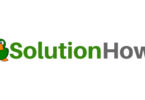
Remote Work
In recent years, the landscape of work has undergone a significant transformation with the rise of remote work. The advent of technology and the evolving preferences of the modern workforce have led to a massive shift towards remote work arrangements. According to Miro’s survey of the remote workforce, a staggering 82% of employees now work from home at least part-time. This paradigm shift has brought with it a host of benefits, including increased flexibility, reduced commuting stress, and enhanced work-life balance. However, it also presents unique challenges, such as employee monitoring and maintaining productivity in a remote setting. There is software that monitors employees in a remote workplace. It enhances productivity, ensures GDPR and California Act compliance, and recommends using official software over illegal alternatives. Here we will delve into the intricacies of working from home, exploring best practices, strategies, and tools to thrive in the remote work era.
Benefits of Working from Home
Flexibility
One of the most alluring aspects of remote work is the flexibility it offers. Employees can tailor their work schedules to accommodate personal commitments, making it easier to balance work and life responsibilities. This newfound flexibility not only boosts morale but also contributes to higher job satisfaction, ultimately resulting in increased productivity.
Time and Cost Savings
By eliminating the need for daily commutes, remote work saves both time and money for employees. The hours previously spent stuck in traffic or on crowded public transport can now be dedicated to work, family, or personal development. Additionally, the reduction in commuting costs adds to employees’ disposable income, promoting overall financial well-being.
Increased Productivity
Contrary to skepticism about productivity in remote settings, several studies have shown that remote employees often exhibit higher productivity levels. The absence of office distractions, combined with a more customized work environment, enables remote workers to focus better and accomplish tasks more efficiently.
Challenges and Solutions
Employee Monitoring
Concerns about employee monitoring often arise when transitioning to remote work. Employers may worry about maintaining productivity and ensuring accountability. However, it’s crucial to strike a balance between monitoring and trust to foster a positive work environment.
- Transparent Communication: Encourage open communication between managers and employees. Set clear expectations and objectives, and establish regular check-ins to discuss progress and address any concerns.
- Utilize Productivity Tools: Embrace productivity and project management tools that facilitate task tracking, time monitoring, and collaboration. Tools like Trello, Asana, or Slack can help streamline workflows and keep everyone on the same page.
- Outcome-Based Evaluation: Shift the focus from time-tracking to outcome-based evaluation. Measure success based on deliverables and results, rather than the number of hours spent working.
Work-Life Balance
Working from home can blur the boundaries between personal life and work, potentially leading to burnout and decreased job satisfaction.
- Designate a Workspace: Create a dedicated workspace to separate work from leisure activities. This physical separation can help create a mental boundary, enhancing work-life balance.
- Set Boundaries: Establish clear working hours and communicate them to family members or housemates. This will minimize interruptions and create a sense of structure in your day.
- Take Regular Breaks: Encourage short breaks throughout the day to recharge and prevent burnout. Step away from your workspace, go for a walk, or engage in activities that help you relax.
Enhancing Collaboration in a Remote Environment
Virtual Meetings
Utilize video conferencing tools to conduct virtual meetings and team huddles. Face-to-face interactions foster stronger connections among team members and enhance collaboration.
Digital Collaboration Boards
Platforms like Miro enable teams to collaborate in real time, brainstorm ideas, and work on projects together, regardless of geographical location.
Conclusion
Work-from-home revolution has undoubtedly reshaped the traditional work landscape, presenting an array of benefits and challenges. By embracing flexibility, leveraging technology, and nurturing transparent communication, employees and employers alike can make the most of remote work arrangements. Employee monitoring, as highlighted in Miro’s survey of the remote workforce, is crucial, but it should be balanced with trust and outcome-based evaluation. As we move forward into the future of work, embracing the best practices and strategies discussed in this guide will empower individuals and organizations to thrive in the remote work era, fostering a more productive, satisfied, and harmonious work environment.






